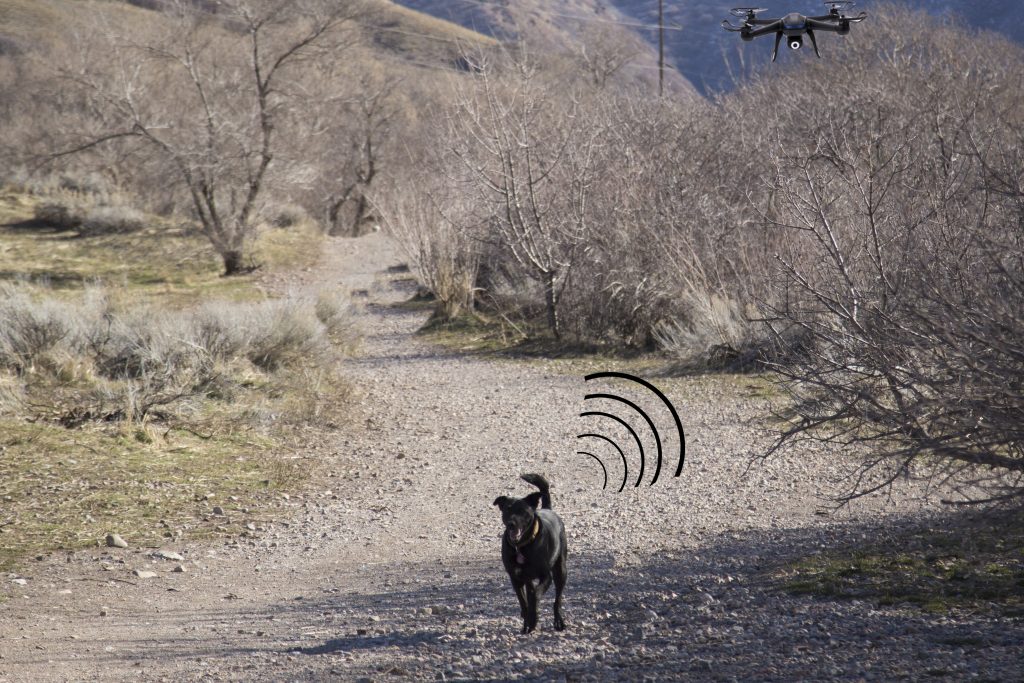This week I was cuddling with a friend’s dog and wondering to myself what problem I could base this assignment around. I have a hard time scaling things down when presented with a prompt like that. Systemic problems pop up in my mind at first, but I have to remind myself to keep it simple, and to keep the practical function of the technology in mind. And then, as I’m playing with the dog’s soft fur it comes to me: dogs are wonderful, dumb creatures, and a good number of them will just run away if given the chance. I realized that drones could potentially be used for tracking down missing dogs and cats, especially in wilderness search and rescue.
This idea is not without its pitfalls, but I think this concept could be a practical use of the technology, and help with making sure the dog or cat is alive and unharmed before its owners or animal control can come to the rescue. Since microchips for pets are not GPS based, this technology would have to be paired with a GPS based device on a dog or cat’s collar. Or, if possible, a microchip that is GPS based instead of the radio-frequency identification (RFID) based microchips. But, the problem with a GPS based tracking device or microchip is that they require a power source, so they would not last forever like a RFID chip. A collar-based chip, while not as reliable since a collar could get lost, would be more reliable and easy to replace than an implant.
The implanted RFID microchips used in pets now are only useful if the pet is found and taken to a vet or animal control. Their information can be scanned on the chip so the owner can be found and notified where their pet is, but what about the pets that don’t get found? I think this type of tracking device would work well for people who bring their dogs camping and could put them on before they head out into the wilderness. This could also work well for the kind of dogs that book it down the road the second they get away from a leash.
I considered having the drones in this concept do more than just monitor the missing pet, but also help in the rescue in some way. I think that complicated the concept too much, and it left too much room for the pet getting injured in some way by the drone. I also considered the fact that dogs and cats could be very easily startled by a drone getting too close to them, which might just make the entire situation worse for the pet. The drones involved would need to monitor the missing pets from a safe distance. I do not know how capable drones are of being automated, but the drones would have to be controlled remotely so they do not get caught and damaged by something or someone as they search for the pet. Once the drone finds the pet, it can monitor it from a safe distance until help arrives.

May 8, 2017 at 12:30 pm
I agree that locating a pet, sending a signal as to its whereabouts, and monitoring from a distance sounds like the best way to approach this! I wonder too what percentage of pets already have these RFID microchips. Would drones be in the possession of a local animal shelter? Town hall? Veterinarian office? Who would be behind this effort? Thanks!